This post may contain affiliate links. Please read our disclosure policy.
Growing up with 100% Lebanese parents, I’m lucky I learned how to make tons of authentic Lebanese recipes. And one of the main recipes that was the most common side dish to most of our food was this classic Lebanese Rice – what we call riz bi sha’riyeh. It’s simple to make, vegan and complements so many Middle Eastern and Arabic dishes.
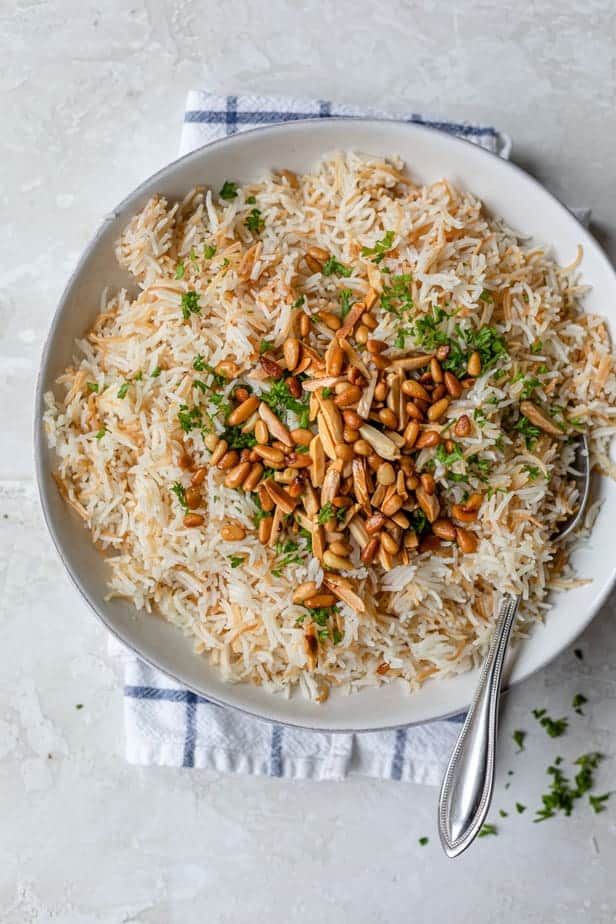
What is Lebanese Rice
Lebanese rice is basically a rice pilaf that’s made up of three ingredients: long grain white rice, vermicelli noodles and butter or olive oil (or a combination of both). Typically, I only season it with salt. But sometimes, I also like to add a dash of cinnamon either before or after cooking. Then I garnish with fresh parsley, and toasted nuts like almonds and/or pine nuts.
This rice pilaf is commonly called Middle Eastern Rice or Arabic Rice. It’s a standard (and possibly the most popular) side dish in that region. We typically serve it with meat dishes like kafta and shawarma, but we also use it as a base to accompany many of our stews. That’s actually how we mostly eat it in my house. It’s fluffy, nutty and versatile – basically my ultimate carb weakness!
Lebanese rice recipe video
Ingredients for the recipe
- Rice: Traditionally you’ll use either long grain white rice, parboiled rice or basmati rice. The parboiled rice gets the best texture, but it’s more processed, so I usually opt for long grain or basmati.
- Vermicelli: This is basically short thin pasta noodles that is iconic of Lebanese rice. In fact, this dish is sometimes called Vermicelli rice because of the important role the vermicelli plays. If you can’t find vermicelli pasta, you can use cappellini (thinner than spaghetti) and just break it up into smaller pieces.
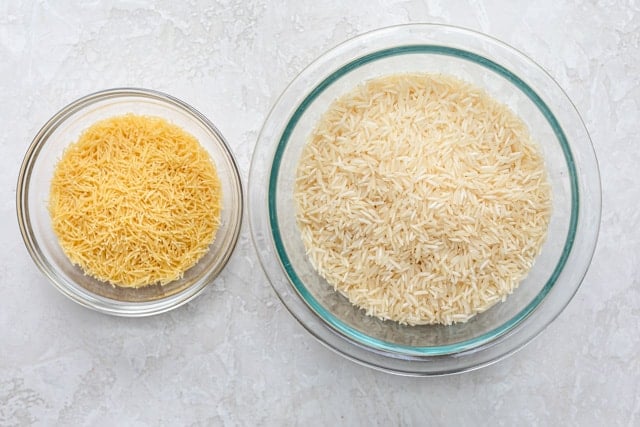
How do you cook Lebanese rice
Before you begin the cooking process, it’s important to rinse the rice. You want to rinse the rice until the water runs clear. Then soak it in a new batch of water anywhere from 5 to 20 minutes, depending on how much time you have. If you must skip the soaking, that’s fine, but don’t skip the rinsing process.
Then drain the rice from the water, and you’re ready to cook the Lebanese rice.
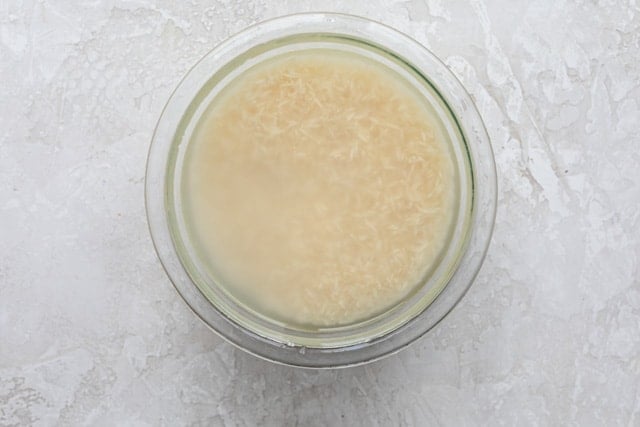
- Fry the vermicelli pasta. While toasting the vermicelli, stir frequently and keep a close eye on it so that it turns a deep golden brown without burning. The longer you allow it to toast, the more nutty the flavor will be.
- Immediately add the rice on top, season with salt and maybe add some cinnamon if you’d like.
- Stir all the ingredients together, and then add hot water at a 2:1 ratio. Bring the water to a boil, then reduce the heat to low, cover the pot and allow the rice 15 minutes to cook at the lowest temperature.
- Once the rice fully cooked, turn the heat off, but don’t uncover the pot. You’ll want to leave the rice undisturbed for 5 minutes to allow the steam to finish cooking the rice. Then you can uncover the pot and fluff with a fork.
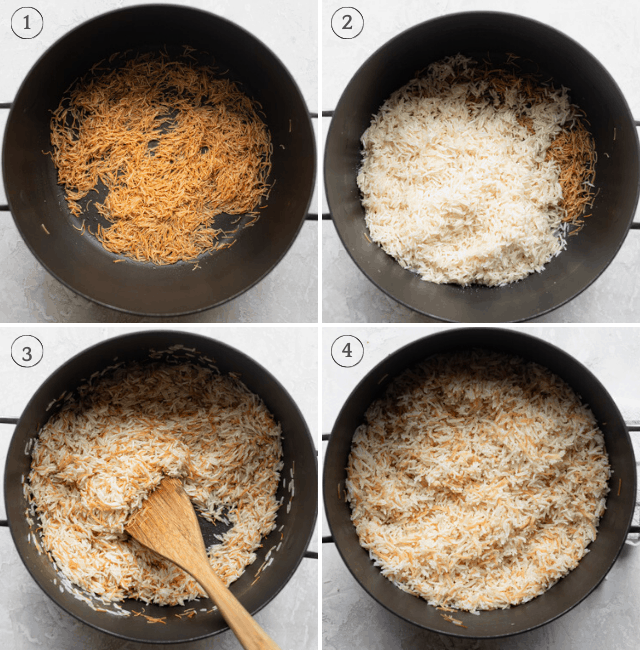
When you fluff it with a fork, you’ll notice the fluffy and delicate texture of the Lebanese rice. You’re now ready to serve it with your main dish.
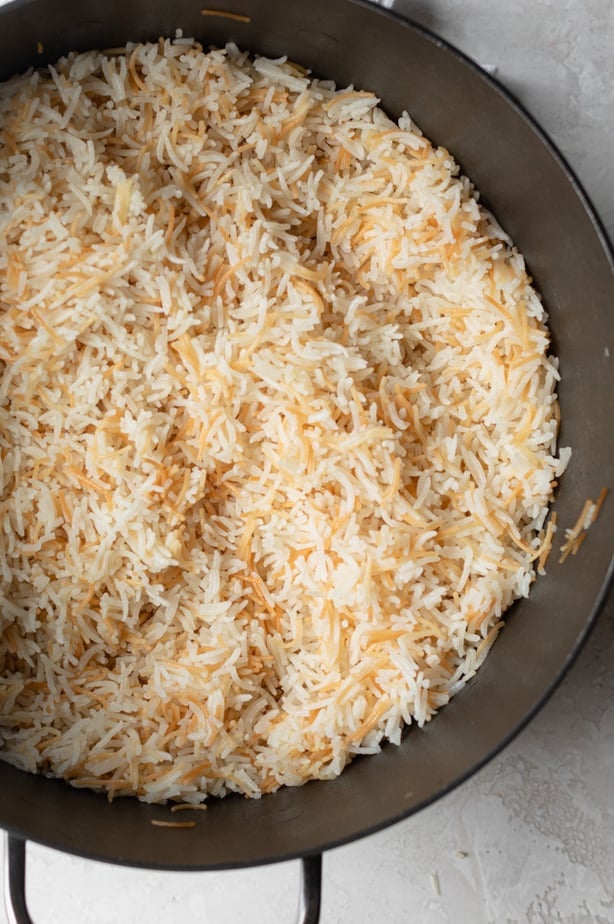
Tips to make the best Lebanese rice:
- Soak the rice if you have time. You can use a fine mesh strainer to rinse the rice and rub the grains of rice between your fingers. Then transfer the rice to a large bowl and allow it to soak with water for at least 20 minutes. This helps eliminate excess starch from the rice and allows for even cooking for each grain of rice (on the inside and outside) which all means fluffy non-sticky rice!
- Use long grain rice (like basmati), and not short grain rice. The difference in the grain size will ensure that the rice doesn’t get clumpy. I would also recommend cooking the rice with the vermicelli for an extra minute before adding the water. You want to coat the rice with the olive oil, which adds to the toasted flavor and reduces any clump factor.
- Stir vermicelli frequently for even toasting. Not only are you looking for a deep golden brown color, but you also want to make sure that all the little noodles are evenly toasted. This helps to even out the flavor and gives it an overall nutty toasted taste. Just make sure to keep a close eye on it it so it doesn’t burn.
- Cover the pot with a clean dish towel after it’s done cooking. The towel helps to seal the lid and absorb the steam so that rice stays fluffy and unclumped.
What to serve with Lebanese rice?
This is a staple in my house and I make it literally every week! My kids would be happy eating it plain with just some plain yogurt. But generally I make it to pair with one of my Arabic stews, like my okra beef stew or my peas and carrots stew.
I also love serving it with these classic Lebanese recipes including: Beef Kafta, Shish Tawook, Beef Shawarma, Grilled Chicken Kabob. This is a great alternative to a regular rice dish with a Middle Eastern twist.
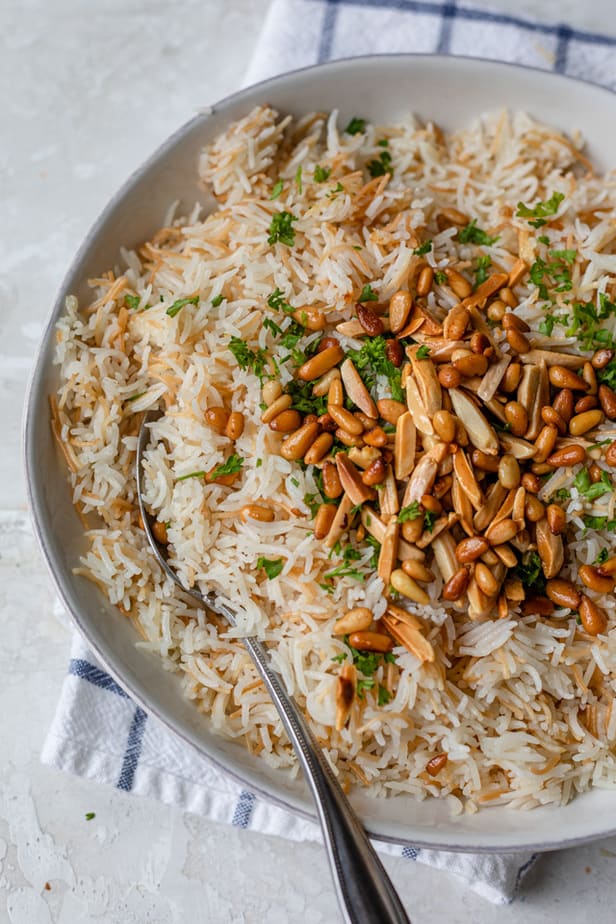
For more rice and grain dishes, check out:
- Mujadara
- Turmeric Rice Salad
- Tomato Rice Pilaf
- Bulgur Pilaf
- Sayadieh Rice Recipe
- One-Pot Chicken and Rice
This Lebanese rice recipe is one that I make for my family 3-4 times a month. It complements so many of our dishes, it completes meals and there’s something so comforting about a bowl of warm rice in general. Using my tips, I hope you can replicate the recipe for your family and enjoy this Mediterranean style rice.
If you’ve tried this healthy-ish feelgood Lebanese Rice recipe or any other recipe on FeelGoodFoodie, then don’t forget to rate the recipe and leave me a comment below! I would love to hear about your experience making it. And if you snapped some shots of it, share it with me on Instagram so I can repost on my stories!

Lebanese Rice
Video
Ingredients
- 2 cups long grain white rice
- ½ cup vermicelli durum wheat semolina
- 2 tablespoons extra virgin olive oil
- ½ teaspoon salt
- dash cinnamon optional
- parsley optional, for garnish
Instructions
- Rinse the rice with cold water until the water runs clear. Drain well and set aside.
- In a medium non-stick pot, heat the olive oil on medium heat. Add the vermicelli pasta and cook, stirring frequently until all the vermicelli is a deep golden brown color. Be careful not to burn it.
- Transfer the rice over the cooked vermicelli, and stir to combine and coat the rice with the olive oil. Season with salt and a dash of cinnamon, if desired.
- Add 4 cups water and bring the mixture to a boil. The water will reduce in the process. Reduce the heat to low, cover the pot and cook for 15 minutes.
- When the rice is fully cooked, remove from the heat and allow the rice to steam for 5 minutes. Then uncover and fluff with a fork.
- Serve warm with fresh parsley, and toasted nuts, if desired.
Notes
Nutrition
Nutrition information provided is an estimate. It will vary based on cooking method and specific ingredients used.
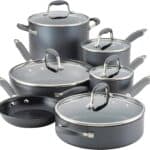
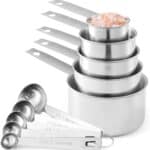
I absolutely love this recipe! It pairs so well with your shish tawook and garlic sauce recipes. Would it be okay to use long grain jasmine rice? I have been buying normal extra long grain rice when I cook this but wondering if I can use jasmine rice since I have a big bag of it! Thank you!
Thank you so much, Tatiana! Jasmine should work fine, you may need to adjust the cooking time by a few minutes but nothing major.
I made this rice tonight and it turned out absolutely perfect. Light and fluffy and the vermicelli was toasty. It’s so good.
Thank you so much!
I have made this recipe several times. I wasn’t ever a believer in the rinsing rice and/or soaking it thing, and I still love my sticky rice, but this is a wonderful recipe. I only buy jasmine and/or basmati in bulk from Patel’s or Je Mart, and I haven’t experienced this recipe to ever be gummy or overcooked. I religiously follow the rinsing and soaking, and perhaps people are using inferior rice, soaking too long, or cooking too long. If you follow it the way it’s written with good quality rice & the right vermicelli, it really comes out great. We serve ours with fresh parsley and some sumac sprinkled on top.
Yum!! Thank you so much for the kind words, Leila! So happy to hear that you are making this dish several times a week.
I made the Lebanese rice today. It was a huge success. I have been cooking white rice in the microwave for years due to burning it on the stovetop so many times. There was no burned rice today 🥳. I followed your recipe and the rice came out fluffy and delicious. I paired it with an Asian pork and broccoli stir fry. Thank you for the recipe it was Sooooooo good 😄
I will send a picture.
You’re so welcome! Thank you for sharing.
Thiss rice is very delicious.
Thank you so much!!
I had the same problem as another person. I followed all the steps perfectly, including the soaking for 20 min. However, it was far to mushy. I avoided my gut feeling of 2 cup rice, 3 cups water! Unfortunately, I also found it tasteless. I will try again with some variations!
Oh no, I am sorry to hear that. Rice is usually cooked at a 1:2 ratio, with one cup of water, and two cups of rice. This can vary based on the brand used, though, and it is best to go by the directions on the rice you use. What type of rice did you use for this, if you don’t mind me asking? Also, the 4 cups also goes towards the vermicelli, so if you want to try and reduce the water, I’d go with 3 1/2 cups first.
Despite rinsing the rice as directed and adding the dash of cinnamon and toasted nuts, this was gummy and flavorless. Nothing like what I’ve had at restaurants.
Oh no, I am sorry to hear that. I’d be happy to help you troubleshoot. It sounds like the rice may have gotten overcooked. What type of rice did you use?
Hi Yumna, this looks delicious thank you! Can I use Angel Hair pasta instead of vermicelli?
Hi ND! Great question. You can use Angel Hair; just break it up into small pieces. The cook time might be a little off so just make sure you watch it. If you try it, I’d love for you to come back and let me know how it worked out.
Love Lebanese food .. making it for the first time at home ..I have made the seven spice mix and my chicken is marinating ..so I will make the rice as a side dish…hope all turns out.👍🙂
I am so excited to hear that you’re making this! Can’t wait to hear what you think!